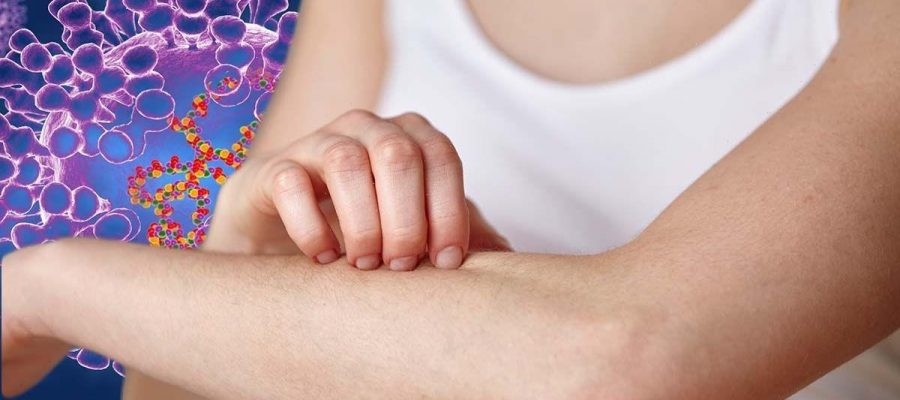Monkeypox: Dr Chris outlines the main symptoms
We use your sign-up to provide content in ways you’ve consented to and to improve our understanding of you. This may include adverts from us and 3rd parties based on our understanding. You can unsubscribe at any time. More info
Shingles describe a viral infection caused by the same virus that triggers chickenpox. Similarly to monkeypox, the characteristic sign of this condition is a rash. Fortunately, there are a few key signs that could help differentiate between the two.
From allergic reactions to Covid, there are plenty of health conditions that can announce themselves by a rash.
However, both monkeypox and shingles are viral infections.
One of the key differences that could help tell the infections apart is the onset of the conditions.
Monkeypox tends to start with “flu-like” symptoms. These warning signs ring the alarm bells before the rash appears.

The NHS details the monkeypox symptoms you can expect:
- High temperature
- Headache
- Muscle aches
- Backache
- Shivering (chills)
- Exhaustion
- Swollen glands.
Once these symptoms kick-off, you will develop the rash that appears between one to five days after the first symptoms.
When it comes to this typical monkeypox sign, it often starts on the face, later spreading to other parts of your body.
This rash will start as raised spots, which will turn into small blisters filled with fluid.
These will then form scabs and fall off, the NHS shares.
However, shingles start with symptoms, including:
- Tingling or painful feeling in an area of skin
- Headache or feeling generally unwell.
Similarly to monkeypox, the rash will follow these initial signs.

Shingles rash will usually appear on your chest and tummy but it can also crop up on your face, eyes and genitals.
This key shingles sign will start as blotches on your skin, appearing on one side of your body only.
If you get a rash on both the left and right sides of your body, it is “unlikely” to be shingles, the health service explains.
According to the Mayo Clinic, other tell-tale signs of shingles rash include:
- Pain, burning, numbness or tingling
- Sensitivity to touch
- Fluid-filled blisters that break open and crust over
- Itching.

If you think you might have monkeypox, you need to call your GP or 111 while also self-isolating and avoiding close contact with others, the NHS advises.
With shingles, you also need to get medical help as soon as possible as you might need medicine to assist your recovery.
Monkeypox cases continue to rise in the UK, with new infections detected in Scotland, Wales and Northern Ireland.
The first case linked to the current outbreak of monkeypox was reported in the UK from a person who had recently travelled to Nigeria on May 7, the World Health Organization (WHO) reports.
Source: Read Full Article
